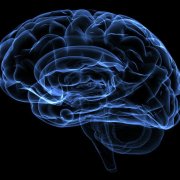Study identifies brain cells that form boundaries between discrete events
Researchers have identified two types of cells in our brains that are involved in organizing discrete memories based on when they occurred. This finding improves our understanding of how the human brain forms memories and could have implications in memory disorders such as Alzheimer's disease. The study was supported by the National Institutes of Health's Brain Research Through Advancing Innovative Neurotechnologies (BRAIN) Initiative and published in Nature Neuroscience.
"This work is transformative in how the researchers studied the way the human brain thinks," said Jim Gnadt, Ph.D., program director at the National Institute of Neurological Disorders and Stroke and the NIH BRAIN Initiative. "It brings to human neuroscience an approach used previously in non-human primates and rodents by recording directly from neurons that are generating thoughts."
This study, led by Ueli Rutishauser, Ph.D., professor of neurosurgery, neurology and biomedical sciences at Cedars-Sinai Medical Center in Los Angeles, started with a deceptively simple question: how does our brain form and organize memories? We live our awake lives as one continuous experience, but it is believed based on human behavior studies, that we store these life events as individual, distinct moments. What marks the beginning and end of a memory? This theory is referred to as "event segmentation," and we know relatively little about how the process works in the human brain.
To study this, Rutishauser and his colleagues worked with 20 patients who were undergoing intracranial recording of brain activity to guide surgery for treatment of their drug-resistant epilepsy. They looked at how the patients' brain activity was affected when shown film clips containing different types of "cognitive boundaries" -- transitions thought to trigger changes in how a memory is stored and that mark the beginning and end of memory "files" in the brain.
The first type, referred to as a "soft boundary," is a video containing a scene that then cuts to another scene that continues the same story. For example, a baseball game showing a pitch is thrown and, when the batter hits the ball, the camera cuts to a shot of the fielder making a play. In contrast, a "hard boundary" is a cut to a completely different story -- imagine if the batted ball were immediately followed by a cut to a commercial.
Jie Zheng, Ph.D., postdoctoral fellow at Children's Hospital Boston and first author of the study, explained the key difference between the two boundaries.
"Is this a new scene within the same story, or are we watching a completely different story? How much the narrative changes from one clip to the next determines the type of cognitive boundary," said Zheng.
The researchers recorded the brain activity of participants as they watched the videos, and they noticed two distinct groups of cells that responded to different types of boundaries by increasing their activity. One group, called "boundary cells" became more active in response to either a soft or hard boundary. A second group, referred to as "event cells" responded only to hard boundaries. This led to the theory that the creation of a new memory occurs when there is a peak in the activity of both boundary and event cells, which is something that only occurs following a hard boundary.


![Embedded thumbnail for Neurons detect cognitive boundaries to structure episodic memories in humans [video]](https://cbmm.mit.edu/sites/default/files/styles/youtube_thumbnail_220w/public/youtube/RLWVVVszkOQ.jpg?itok=Hraq5AXQ)